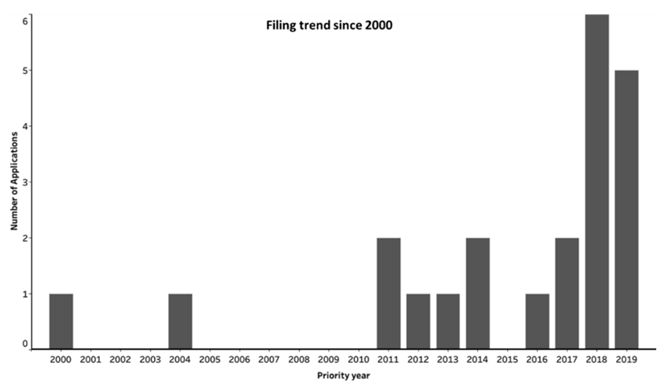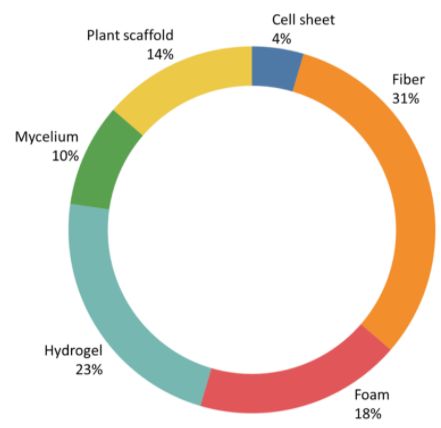"Clean" meat, or cell-based meat, is a form of cellular agriculture in which meat is produced by in vitro culture of animal cells, instead of from slaughtered animals. It is believed that clean meat allows consumers to maintain their dietary preferences for animal meat while removing any moral, health and environmental considerations that may be associated with current meat production.
Some key players in this market include Memphis Meats (US), MosaMeat (Netherlands), Integriculture (Japan), Aleph Farms Ltd (Israel), Finless Foods Inc. (US), Avant Meats Company Limited (China), and Shiok Meats (Singapore).
By 2032, it is estimated that the clean meat market will reach $600 million.
Current Limitations
At present, consumers would be familiar with the offerings of chicken nuggets and meat patty products sculpted out of an amorphous lump of animal cells, in contrast to perfectly-formed chicken breasts, steaks and pork chops.
Indeed, growing a cut of meat outside of an animal's body is a complex and challenging endeavour.
For example, to replicate the profile and texture of a cut of meat, in addition to the consideration of co-culturing multiple cell types (i.e. muscle cells, fat cells, blood vessels, etc.) for forming a tissue, a scaffold may be required to allow different cells to adhere and grow alongside each other in a highly controlled and ordered way. Further, the scaffold should ideally be integrated within the final product and must be edible or biodegradable, as well as low-cost and readily available.
Patent Landscape: The Search for a Scaffold
To explore the emerging trends and opportunities in the clean meat space relating to scaffolding technology, we conducted a patent landscape search and located 23 patent families in this technology area since 2000. Based on the recent increase in filings, shown below, there appears to be a growing interest in scaffolding technology for use in clean meat.

The scaffolding technology can be broadly classified into six main groupings; fibre, foam, hydrogel, mycelium, plant scaffold and cell sheet. In particular, the use of biodegradable fibres and hydrogels made from biopolymers appears to be receiving considerable focus at present.

This makes sense, as the scaffold will also need to be porous to some degree for allowing perfusion of nutrient media and cells. Additionally, to replicate the texture of a cut meat, cells (such as myocytes and fibroblasts) must be able to develop anisotropically to mimic the fibrous structure of muscle fibres. The use of fibres can possibly allow for fine-tuning of pore size and microstructures within the scaffold and provide an anisotropic surface for cell adhesion and growth. Hydrogels can possibly assist with cellular differentiation by, for example, fine-tuning physical parameters such as stiffness, cell adherence, or by chemically doping with growth factors. These cues can direct cells to differentiate into various cell types along defined regions, and can help achieve the flakiness of a fish filet or the marbling found in a steak.
Technology Highlight: Using Plant Scaffold
A recent scaffolding technology revolves around using cellulose scaffold from plants. The scaffold can be generally prepared by decellularising plant tissue to isolate the extracellular matrix scaffold. It is believed that a natural extracellular matrix scaffold can provide the necessary physical and biochemical environment to facilitate the growth of cells.
Outlook
The above highlights that scaffolding technology in the clean meat industry is still at a nascent stage. It is likely that critical technologies will be developed in the near future which will likely serve as lucrative intellectual property licensing opportunities.
As a further point, while clean meat can probably be produced using much of the ideas and techniques of tissue engineering traditionally used in regenerative medicine, it has to be remembered that any development must take into account the original intent of clean meat: food that is low cost, "clean" and easily scalable. Perhaps greater strides in the clean meat industry will be made when collaborations with the biomedical and materials chemistry fields are realised.
Definition
Fibre: an elongated entity made of natural or synthetic polymer, usually having diameters in the nanometre range. Can for example be produced by electrospinning or microextrusion techniques.
Foam: a multi-phase porous material with a porosity larger than 50% in which gas (e.g. air) is dispersed in a liquid, solid or gel. The diameter of the bubbles (or the pore size) is usually larger than 50 nm.
Hydrogel: a three dimensional network of natural or synthetic polymer having the ability to absorb a large amount of water or biological fluids.
Mycelium: a vegetative part of a fungus comprised of an isotropic matrix of discrete hypha.
Plant scaffold: an extracellular matrix scaffold after decellularising plant tissue.
Cell sheet: a single, contiguous sheet of cells with intact cell-cell junctions and deposited extracellular matrix. Tissue is reconstructed by layering multiple layers of cell sheets.
Methodology: The Lens was used for the patent search, based on the search string performed on 16 December 2020: ("clean meat" OR "culture* meat" OR "cell* meat"~1 OR "lab* meat"~1 OR "healthy meat" OR "slaughter* meat"~1 OR "in vitro meat"~1 OR "vat* meat"~1 OR "cultivate* meat" OR "synthe* meat") AND (scaffold OR structure). Data was further refined based on full text.
The content of this article is intended to provide a general guide to the subject matter. Specialist advice should be sought about your specific circumstances.


